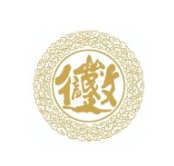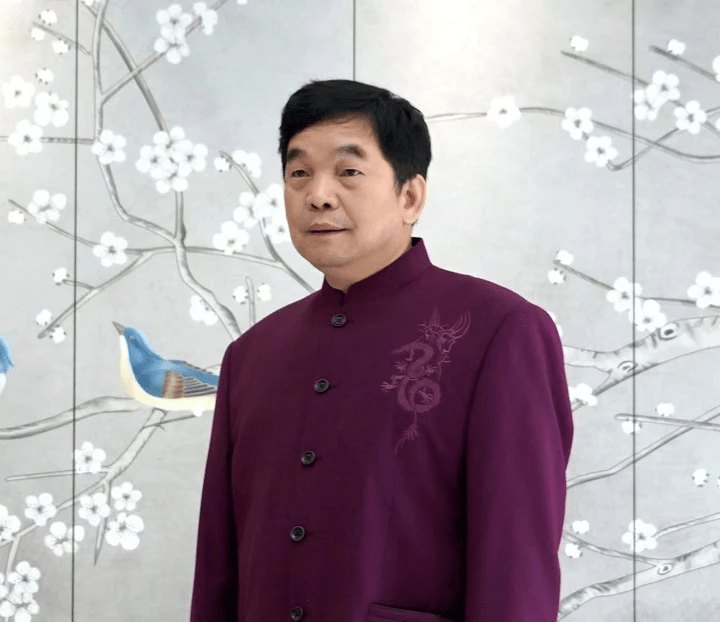

阅诚徵数理 解宇宙法则
Uncover the laws of the Universe with Math and Yi Jing
The Author
作者
Introducing You Huisong: Visionary Education Leader and Author
教育领域的开拓者与《诚徵数理》的作者

You Hui Song 游惠松
You Huisong, Chairman of Fujian Qifang Group and President of Zhangzhou Private Education Association, is a trailblazer in education. His achievements have elevated Zhangzhou Liren School to become a renowned institution, recognized as an "Advanced Private Education Institution in Fujian Province." You Huisong's influence extends beyond education, as he is also the author of the acclaimed book "Cheng Zheng Shu Li", or "Sincere Energy and Mathematical Principles" (SEMP)
SEMP presents a fresh perspective on metaphysics, showcasing groundbreaking research and practical applications. Esteemed scholars, including Fudan University's Professor Xie Jinliang, praise the book's unique exploration of truth through numbers and its unraveling of life's mysteries. Former Chairman of the Chinese Overseas Chinese Federation, Zhuang Yanlin, commends the book for its innovative reconstruction of traditional culture and broad vision.
游惠松,福建七方集团董事长和漳州市民办教育协会会长,是教育领域的远见者。他的卓越成就使得漳州立人学校成为一所享有盛誉的机构,并被评为“福建省民办教育先进单位”。游惠松的影响力不仅限于教育领域,他还是备受赞誉的著作《诚徵数理》的作者。
《诚徵数理》提供了对于易学的新鲜而发人深省的观点,展示了突破性的研究成果和实际应用。著名学者,包括复旦大学的谢金良教授,称赞该书通过数字独特地探索真理,并揭示了生命的奥秘。中国侨联前主席庄炎林对该书的创新重构传统文化和广阔视野给予了赞赏。
Chapters 章节
Preface
The Way of Heaven and Earth, the union of Yin and Yang, gives birth to all things. In the beginning, the nature of things is inherently good, and goodness leads to proper and complete fulfillment, thriving through diversity and mutual assistance. All things harmonize, the sky is clear, sincerity is cherished, and things transform and flourish. Humans are the spiritual beings among all things, and their value lies in sincerity, righteousness, and fulfilling their destiny.
Through the passing of time, in the vast universe, humanity faces an endless array of natural disasters and helplessness. Faced with the cruel struggles among their own kind, they can only lament and look to the heavens, resulting in accumulating grievances and divine retribution, survival struggles, dynastic changes, and the ceaseless forward motion of history's wheel. In the spiritual realm, people yearn for a salvational force to appear between heaven and earth. Thus, God (or various deities) descends to the mortal realm, becoming the almighty ruler in people's hearts. The truth of the proposition of "God's omnipotence" has always been contentious. Some have used the paradoxical proposition "Can God create a stone too heavy for Him to lift?" to refute the conclusion of "God's omnipotence," leaving people speechless and adding to their confusion.
Across eight thousand miles and thousands of years, humanity, amidst the process of survival and development, has left behind civilization and truth, despite the presence of ugliness and fallacies. The pursuit of truth leads to the emergence of science, and thus humanity enters the era of technological revolution. Legendary abilities such as "clairvoyance, acute hearing, and seventy-two transformations" have been confirmed by technologies like television and smartphones. Bold claims such as "being able to reach the moon in the sky and catch turtles at the bottom of the ocean" are gradually being realized.
However, the reasons behind Zhuge Kongming's ability to accurately calculate fortunes and misfortunes remain unclear to this day. As humanity gradually unveils the mysteries of the universe, they struggle to unravel their own mysteries.
Looking at the world, the tide of the technological revolution has improved humanity's standards of clothing, food, shelter, and transportation. However, humanity's souls have not kept pace. Therefore, humans do not universally experience happiness and joy but instead endure restlessness, distress, and disappointment. They become mired in the pursuit of fame and fortune, immersed in deceit, and suffer day after day without knowing the right path to take.
Thus, how should individuals properly position themselves? What principles should guide human conduct? How can human society achieve healthy development? What rules should be followed in the process of development? A series of questions arise, and humanity seeks answers, longing to attain truth.
In fact, the grand path is simple. If it were to be expressed in one word, it would be "sincerity."
The existence of antimatter and the constant of parallel universes make humanity realize that objects in three-dimensional space are subject to the transformational energy between the real and virtual universes. This fundamental energy is referred to as "sincere energy" in this book, and its changing patterns are described as the "laws of the universe." "Sincerity" is the beginning, and "energy" encompasses the concepts of influence and response. "Sincere energy" represents the transformative energy between the real and virtual universes, which is supreme and cannot be resisted by any force. For humans, "sincere energy" represents a mindset of sincerity and righteousness in civilization.
Heaven moves through effects; speech changes through intonation. Only when the three realms are combined can they be considered a comprehensive summary of traditional Chinese culture. Rooted in the land of China, the images of Confuc
ianism, Taoism, and Buddhism communicate with people by responding to their requests and manifesting when the heart is sincere. Chinese civilization has been continuous and brilliant. Fu Xi created the Eight Trigrams of the Yellow River, Xia Yu achieved great cooperation in flood control; Kong and Meng established the concept of "Taiji," and Zhu Xi highlighted the greatness of humanity. The Dao Yuan's "Book of Changes" explains the significance and principles of the trigrams. The network of spiritual numbers emerges from the source. This is truly a reflection of Chinese civilization.
The book "Sincere Energy and Mathematical Principles" presents the following to readers:
Based on mathematical theory, it argues for the existence of parallel universes, leading to a new cosmic perspective. The real and virtual universes generate sincere energy, and the evolution of sincere energy follows seven major laws of the universe that no force can resist. All things can only follow these laws.
Interpreting the "Book of Changes" in the style of Song poetry is a fresh attempt that enables readers to understand the meanings of the hexagrams and trigrams in the "Book of Changes."
The new construction of a complete mathematical system for the "Book of Changes" allows for a relatively easy unraveling of its mysteries for those accustomed to decimal calculations, transforming "traditional divination" into "logical operations" and thus achieving the goal of predicting the unknown.
The creation of the chart depicting the movement of the hexagrams in heaven and earth allows people to use the sixty-four hexagrams of the "Book of Changes" to explore the mysteries of the rise and fall of various dynasties over five thousand years.
The determination of the hexagrams for the flowing years and elemental cycles revises and reconstructs traditional Feng Shui and fortune-telling. Building upon the theory of "five elements' generation and restraint," a new theory of the "eight trigrams field" is constructed, based on "logical operations." Feng Shui and fortune-telling are hence integrated into the scientific prediction system.
The successful combination of the hexagram sequence for wanderers and the eight-order magic square in mathematics unlocks the regular numerical arrangement of cosmic material energy, giving rise to mathematical deductions for "regular fields."
The combination of the heavenly hexagram and the earthly hexagram indicates that human society will inevitably move towards a unified world where the world belongs to all. Humanity will inevitably achieve a shared faith, which is the harmonization of "sincere energy" and adherence to the laws of the universe.
The process of recognizing and practicing sincere energy is the process of the human soul catching up with material civilization and seeking happiness by unraveling its own mysteries.
After the first edition of this book, the author had deep conversations with many experts and scholars, and they shared their perspectives, providing abundant inspiration. Encouraged and spurred on by numerous colleagues, the author spent three years exploring and seeking the truth. The second edition is now available after an additional two years of exploration, further enhancing the brilliance of "Sincere Energy and Mathematical Principles."
Do not regard science as a god; the pursuit of true knowledge is endless. With the publication of this book, it is hoped that it will be of assistance to readers in their pursuit of truth.
You Hui Song
July 2, 2021
In Enlai Mingyuan
Chapter 1: Sincerity opens heavens
Sincerity resonates,
Seeking the essence of truth in numerology's source.
Parallel universes, real and virtual, stand,
The interplay of yin and yang reflects and rotates.
Entangled quantum forms cause and effect,
The tradition of the Tao follows the laws of civilization and nature.
Sincere energy harmonizes and supports,
Achieving transformation and the true roundness of life.
What is the "Tao"? For thousands of years, no one has been able to clearly define it, hence the saying that the great Tao is formless. It is precisely because of this that humanity's pursuit of the Tao has been relentless throughout history. This chapter explores the Tao through numbers, seeking answers about the Tao and adhering to its principles.
Numbers are the abstract expression of things, yet they reflect the essence of things. Therefore, mathematics is the foundation of all sciences. In the past, mathematics served as the theoretical basis for scientific and technological advancements. This chapter, based on mathematical theory, engages in logical reasoning to prove the existence of parallel universes. It will open the doors to a new perspective on the understanding and methodology of the universe, leading to a fresh exploration and self-revolution. With this beginning, we await the fruitful results.
Section 1: Mathematics and Spacetime
The expansion of finite fields in mathematics
Human beings have been using fractions (including decimals) since the time of using knots for recording and the need for resource allocation. It wasn't until around 500 BCE that a disciple of the ancient Greek Pythagorean school named Hippasus made an astonishing discovery: the diagonal of a square and its side length are incommensurable. This finding displeased his teacher, Pythagoras, as it contradicted the philosophical belief of the Pythagorean school that "everything is a number" (referring to rational numbers). This incommensurability was seen as an irrational number and was condemned by the academic community as an illogical entity. To make matters more ironic, Hippasus used mathematical methods to prove the rationality of this new number. The method he employed, reductio ad absurdum, was a commonly used technique in the Pythagorean school. Pythagoras, unwilling to admit his own mistake and unable to refute Hippasus's reasoning through logical deduction, chose to suppress the information, imprison Hippasus, and eventually punished him with death by drowning. This event represents the greatest tragedy in the history of Greek mathematics. It was only after Pythagoras's death that irrational numbers could be discussed openly, and to commemorate Hippasus, they were named irrational numbers.
Hippasus's discovery was the first time that the flaws of the rational number system were revealed to people, proving that it cannot be equated with the continuum of an infinite straight line. Rational numbers do not fill every point on the number line; there exist "gaps" that cannot be expressed using rational numbers. Subsequent mathematicians have proven the existence of countless such "gaps." Afterward, the mathematical community established the concept of real numbers, which refers to the sum (collective term) of rational numbers and irrational numbers.
Later on, it was discovered that even with the use of all rational and irrational numbers, it is still not possible to solve algebraic equations. For example, quadratic equations have no real solutions, meaning that negative numbers do not have square roots within the realm of real numbers. To solve this problem, people introduced an imaginary unit, denoted by i, and defined it in a way that allows square roots of negative numbers.
The birth and development of complex number theory went through a long and arduous process. In 1545, Italian mathematician and physicist Cardano listed an example in his book "Ars Magna": dividing 10 into two parts such that their product is 40. This problem is essentially finding the solution to an equation, and the roots obtained in the process are and , with their product being 40.
The introduction of this form purely based on its form raised doubts and faced resistance in history, hence the term "imaginary number." The term "imaginary number" was coined by the famous 17th-century mathematician and philosopher René Descartes, and it signifies that it is imaginary. Gottfried Wilhelm Leibniz, on the other hand, believed that imaginary numbers are marvelous and peculiar creatures, almost amphibious beings that exist and do not exist at the same time.
Until the 18th century, mathematicians such as d'Alembert and Euler gradually elucidated the geometric and physical interpretations of complex numbers, establishing a systematic theory of complex numbers. This allowed people to accept and understand complex numbers. In the early 19th century, Gauss systematically used the symbol "i" and advocated representing complex numbers as ordered pairs, known as the complex plane, which gradually made complex numbers widely recognized.
Following Euler, Norwegian surveyor Caspar Wessel proposed representing complex numbers as points on a plane, and Gauss introduced the concept of the complex plane, finally providing a solid foundation for complex numbers and paving the way for their applications.
In modern high school mathematics textbooks, in the section on the extension of number systems and complex numbers, the chapter begins with the statement: "Is it absurd to obtain a negative result by squaring? Turn left twice and face the opposite direction, addition, subtraction, multiplication, and division still hold, equations have solutions without question." As we all know, by introducing the imaginary unit "i" as the root of equations, the range of numbers expands from real numbers to complex numbers. "Imaginary numbers" are not imaginary; they are not only an indispensable part of mathematical theory but also have important applications in human life, production, and scientific research.
Contact Us
